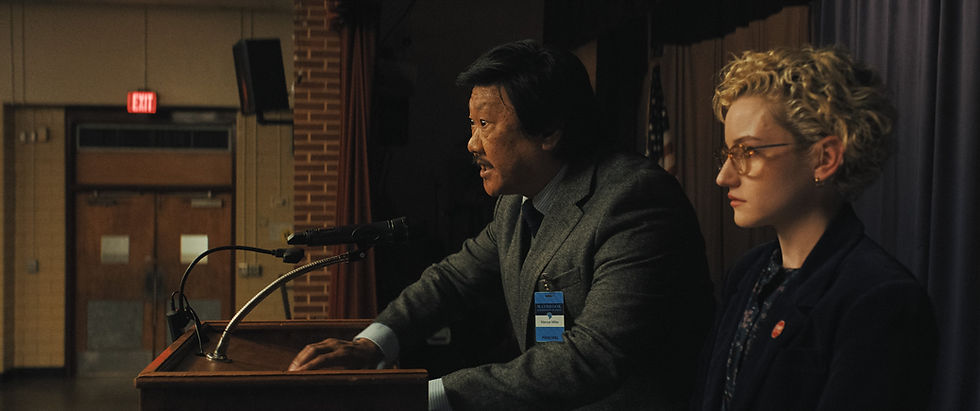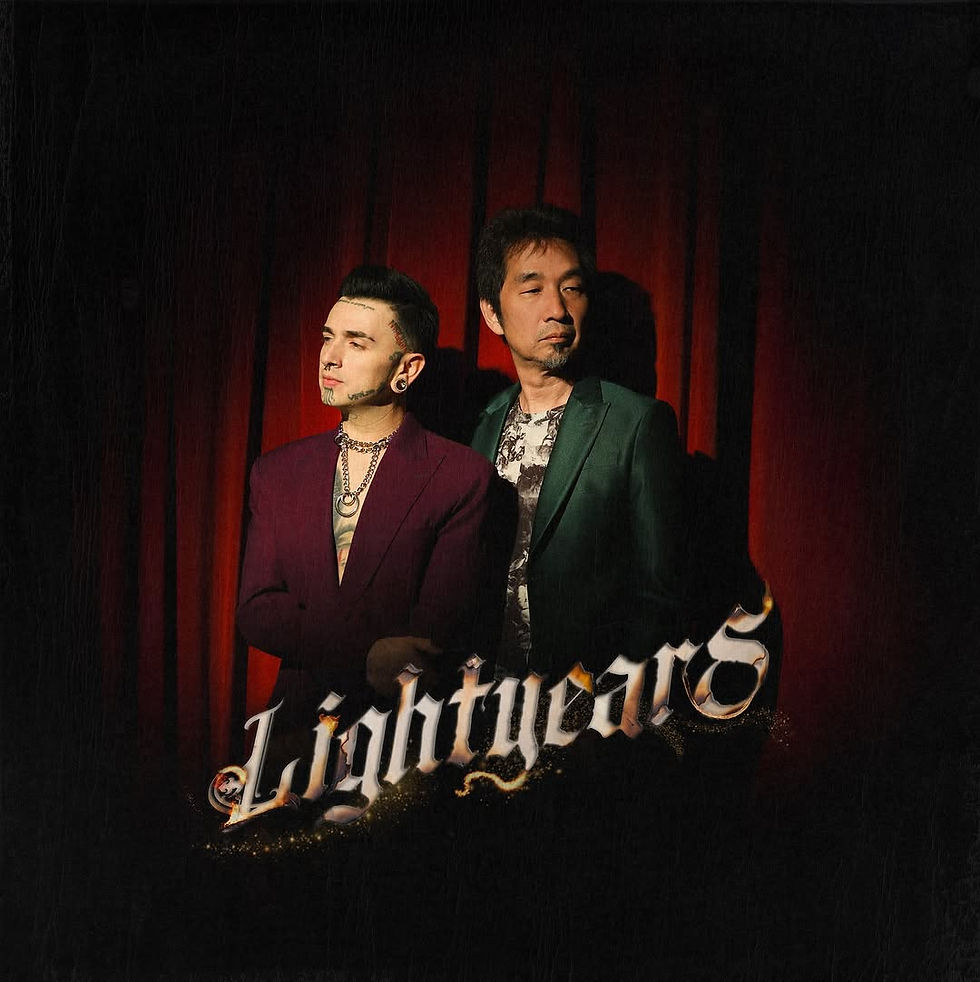NOPE REVIEW: BLOODY MIRACLES
- Pepito Cadena

- Jul 31, 2022
- 3 min read
Updated: Jul 31, 2022
*WARNING: SPOILERS AHEAD*
2019’s Us left Jordan Peele fans praying for another bloody miracle. Nope is the long-awaited answer. Get Out and Us boasted historic success with February release dates, but this film aimed at an ambitious summer release - and for good reason. Nope sucks you into a chilling blockbuster of mammoth proportions and spits you out left to wrangle with what it means to be a spectator.

Two especially compelling performances carry the heart of Nope. The first is Daniel Kaluuya’s man of few words, OJ. His glossy eyes lead their own masterclass on body language. The second performance? Baby, that’s Keke Palmer. From the moment she runs into frame, she commands unwavering attention. Her portrayal as OJ’s LGBTQIA+ sister is undeniable and energizing. Keith David (The Thing, They Live) makes a memorable return to Horror as Otis Haywood Senior. All three characters are descendants of the first Black man to ever be exploited on moving film.
Exploitation is violent, bloody, and loud. When Gordy the chimp revels in blood in front of an applause sign, that much is clear. Seconds in, Otis looks up, only to have a falling quarter slice through his eye and leave him for dead. This analogy frames upwards Black mobility as being pierced by capitalism. A bloodied quarter and the UFO creature it fell from seemingly represent the white construct of capitalism that is historically built upon Black and Indigenous labor. Further supporting this, only money and material things survive the path of destruction set upon it. Capitalism is the very filth thrown at those exploited, echoing Peele’s opening quote.
“I will cast abominable filth upon you, make you vile, and make you a spectacle.”
Peele loves a foreboding Bible quote. It’s ironic to imagine a purveyor of dark imagery scanning Old Testament pages for inspiration to conjure new nightmares. His strongest suit is tethering the fantastically frightening to grounded conflict of human morality.
The genius of Nope is all in the details. In a time when mass gun violence and public health are some of our most frequent spectacles, Keke’s Emerald and Brandon Perea’s Angel offer rhetoric reflective of apolitical and moderate attitudes. When OJ contemplates a future survival strategy, Angel counters, “Read the room.”
“...Nobody wanna talk about that,” Emerald adds. Another key (& Peele) detail comes into play when Steven Yeun’s Ricky greets Emerald and OJ into his office with, “Su casa es mi casa.” While clearly intended to resemble the phrase “Mi casa es su casa” or “My house is your house,” Ricky’s words instead translate into “Your house is my house.” This slight change reflects Ricky’s distorted boundaries after the trauma of his encounter with Gordy that took place on a house set broadcasted to households worldwide. Even the way Ricky recalls this incident exhibits his lack of ownership, showing that his trauma belongs to pop culture spectators.

The claustrophobic depiction of a crowd being savagely devoured by the living UFO is sure to stay with moviegoers long after the credits. So too will Michael Wincott’s chilling recitation of The Purple People Eater. Another standout sequence pairs blood rain against a haunting rendition of Corey Hart’s Sunglasses At Night. However, the most frightening and gruesome moments of Nope belong to Gordy. A creation of CGI and motion capture, Gordy’s ferocious violence cutting through silence is terror personified. These scenes recall a real-life tragedy covered on Oprah in 2009.
Each viewer is challenged in their role watching Nope. You’re seated, popcorn in hand, staring at mass death and animal exploitation. It’s no coincidence that the triggers for outbursts from Lucky and Gordy are reflective surfaces. When confronted with their truth - exploitation - these creatures lash out. The same is true for the living UFO when reflected in someone’s eyes. OJ attempts to wrangle this creature in the climactic third act. Emerald finishes the creature off before Peele drives his point home by having the media arrive first on the scene before the police. While the design of the extra-terrestrial feels original, it evokes fantastical wonder in contrast to the gritty, dark tone set throughout the first two-thirds of the film. The finale may feel disjointed for that reason, every bloody miraculous detail that richens Nope’s two hours and fifteen minutes are ones worth celebrating.






Comments